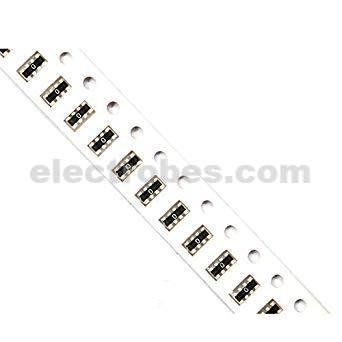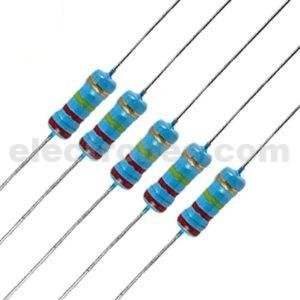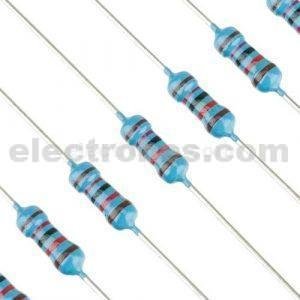1K Ohm 102 0603 SMD Resistor Network Array
| Specification | Value |
|---|---|
| Resistance Value | 1KOhm |
| Power Rating | 1/8W |
| Power Rating per Resistor | 1/16W |
| Number of Resistors | 2 |
| Family | 742 |
| Type | Array |
| Circuit Designator | ISOL |
| Number of Terminals | 4 |
| Technology | Thick Film |
| Temperature Coefficient | 200ppm/°C |
| Terminal Pitch | 0.8mm |
| Termination Style | Concave |
| Tolerance | 5% |
| Minimum Operating Temperature | -55°C |
| Maximum Operating Temperature | 125°C |
| Mounting | Surface Mount |
| Packaging | Tape and Reel |
| Case Size | 0606 |
| Case Size per Element | 0603 |
| Case Style | Molded |
| Package/Case | 0606(2 X 0603) |
| Product Depth | 1.6mm |
| Product Height | 0.6mm |
| Product Length | 1.6mm |
In stock
₨ 10
In stock
Array resistors (also called resistor arrays) are a type of fixed resistors – devices which are used in electrical circuits to limit the flow of electricity and where the resistance is set at a specific value that can’t be changed. Resistors help to prevent other circuit components from being damaged or destroyed.
How do array resistors work?
Array resistors are made from a combination of several resistors that are configured into a pattern. Although most array resistors use resistors connected in series, some array resistors use resistors in parallel or series-parallel designs. The resistors in a network act as voltage dividers which divide the voltage that is applied to a circuit into smaller amounts.
Where are array resistors used?
Array resistors are convenient when you need several resistors that all have one end connected to the same point in your circuit. They’re widely used in electronic applications. The most common applications include:
- Consumer electronics and computers
- Analogue-to-digital and digital-to-analogue conversion
- Voltage dividers for power supplies
FEATURES:
- Advanced thin film technology
- Two pairs or four equal resistor values
- Relative TCR down to ± 5 ppm/K (tracking)
APPLICATIONS:
- Precision analogue circuits
- Voltage divider
- Feedback circuits
Based on 0 reviews
Only logged in customers who have purchased this product may leave a review.











There are no reviews yet.